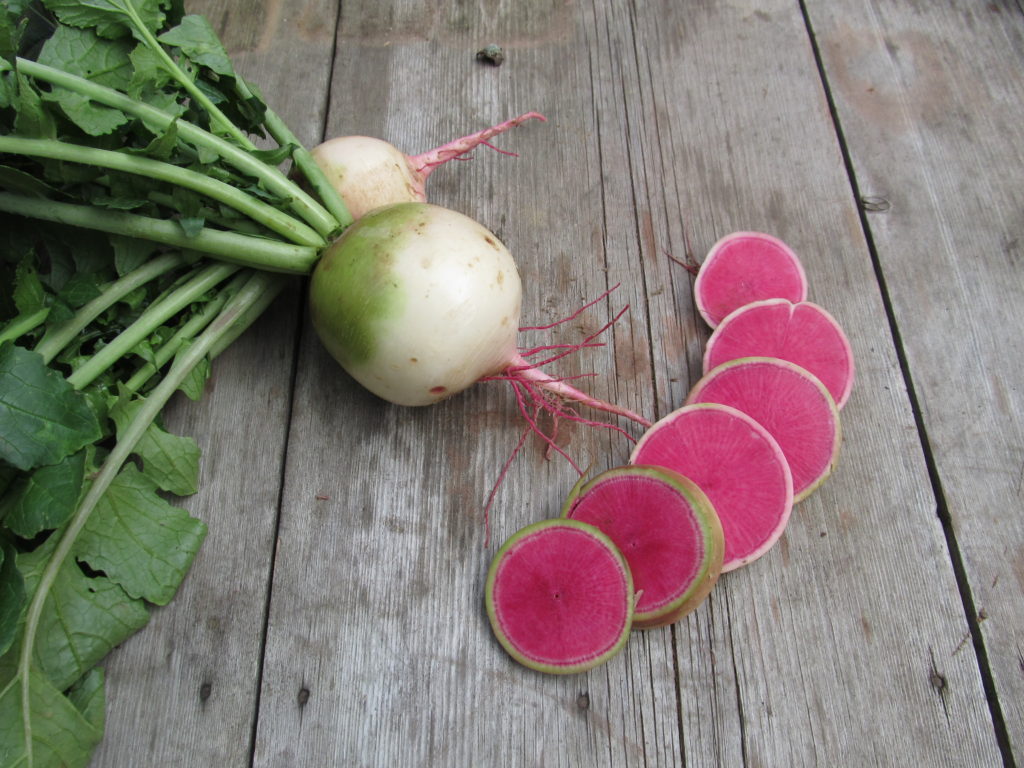This is the second of our 3-part series on how to harvest and store vegetables for winter from former employee and Long Season Farm farmer, Erin Enouen. Last week Erin covered vegetables that should be harvested before frost (find the post here if you need a recap). This week Erin looks at how to handle and store vegetables that benefit from some frost but can't handle a hard freeze.
HARVEST BEFORE A HARD FREEZE
Most roots benefit from a frost, however can't handle a hard freeze. Plan to harvest these up to 3 weeks after your first fall frost, but keep an eye on the nightly lows, and harvest them before temperature dip below 30 degrees. Though these crops can handle a frost, be sure they are completely thawed when harvesting.

1. Fennel
Harvest: Fennel is the least cold tolerant of the vegetables in this category. The bulb rests on top of the soil making it more susceptible to freeze damage. However, it thrives in the cold, so it is one of the more time sensitive storage crops. I always time my planting for as late as possible. Handling: Fennel is not an excellent keeper but will store for 4 weeks. We plan to have fennel for our customers in November and into December, depending on when a freeze occurs. Harvest by cutting the bulb from the root just under the soil surface. To prep for storage, trim all the fronds back to 1/4-1/2 inch above the bulb.
Storage: Store in cold conditions in a moderately humid environment. We use stackable bins in a cold storage room, but a plastic bag in a refrigerator works great!
2. Storage Radishes, Rutagabas & Turnips
Harvest: Leave your turnips, rutabagas and radishes in the ground for a frost and you won't be sorry. In general, these vegetables are very cold hardy and can withstand temperatures in the low 30s. However, they cannot handle temperatures in the 20s, even with layers of protection. Harvest by pulling roots out by the base of the tops. Daikon radishes may need the assistance of a garden fork, take care not to spear the roots. Handling: Do not wash the roots, but remove any loose or clumping dirt from them by shaking them off. Trim the tops to 1/2 inch above the root.
Storage: Turnips,, rutabagas and radishes prefer a cold, humid environment and will keep for several months if properly stored, 33-42 degrees is ideal. Placing dry roots in a plastic bag or bin is ideal. Excess moisture on the roots will cause them to rot, however, check them periodically to make sure they are not too dry, and spritz them with water to keep them moist.
3. Beets
Harvest: Beets are similar to turnips. Harvest after frost but before temperatures dip into the twenties. Simply pull out by the tops. Handling: Do not wash the roots, but remove any loose or clumping dirt from them by shaking them off. Trim, do not rip, the tops off, leaving a 1/2 inch of stem. Storage: Beets prefer a cold, humid environment and will keep for several months if properly stored, 33-42 degrees is ideal. Placing dry roots in a plastic bag or bin is ideal. Excess moisture on the roots will cause them to rot, however, check them periodically to make sure they are not too dry, and spritz them with water to keep them moist.
4. Cabbage
Harvest: European storage cabbages are much hardier than Chinese cabbages, though for optimum storage-ability, harvest before the heads freeze. Harvest both varieties by cutting the head at its base, removing only damaged leaves. Handling: Be sure to remove dirty and damaged outer leaves, and remove any cabbage worms and pests before storing. Leave some outer leaves though, these act as a storage barrier that help keep the interior fresh. Storage: Cabbages will keep in a cold, humid environment, ideally 33-42 degrees. They can be packed in bins in cold storage, or kept in a refrigerator for several months.
Stay around for the final part in this series next week when we'll cover the most cold hardy vegetables which can hang on until after a cold freeze.








